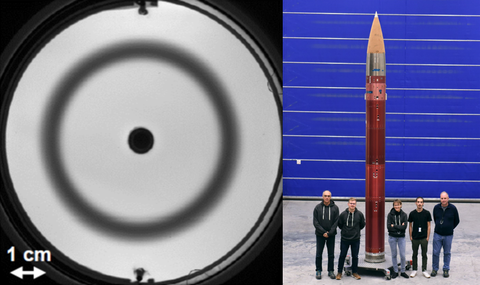Nov 11, 2022
Reaction front experiment successfully launched on TEXUS-57 sounding rocket

TEXUS-57 Reaction Front Sounding Rocket Experiment
On 01.10.2022, the CHYPI (Chemo-Hydrodynamic Patterns and Instabilities) experiment was successfully launched on the TEXUS-57 sounding rocket at the Esrange Space Center in Sweden. AIRBUS was responsible for the realization of the TEXUS-57 rocket. The payload consisted of 4 experiment modules. The rocket reached an altitude of 240 km and provided 350 s of weightlessness for the experiments. Our module investigated the influence of gravity effects on the propagation of reaction fronts. The experiment is funded by the European Space Agency ESA and the German Aerospace Institute DLR.
The project is integrated into the ESA Topical Team CHYPI (Chemo-Hydrodynamic Patterns and Instabilities). This is a team of European scientists (project lead at Helmholtz-Zentrum Dresden-Rossendorf/TU Dresden, coordination at Université Libre de Bruxelles, project partners at University of Szeged, Otto-von-Guericke-University Magdeburg, Université Paul Sabatier Toulouse and University of Sassari), which is financially supported by ESA.
Flow-driven reaction fronts are used to synthesize novel particle forms, e.g. as selective catalysts. At the same time, they are relevant to environmental engineering applications: They occur in soil sealing and stone restoration, and in CO2 sequestration in saline aquifers. In all of these processes, the desired product is generated by injecting a first reaction solution into a second. Thus, a circular reaction front is formed (see figure). Theoretical models are needed to control and optimize product formation in the front. These models are developed within the ESA Topical Team CHYPI (Chemo-Hydrodynamic Patterns and Instabilities) at the Université Libre de Bruxelles. Important parts of the model can only be tested and validated by experiments under microgravity conditions.
In addition, weightlessness experiments provide us with important insights into the function of chemical reactors under altered gravity conditions. This understanding is important for supplying space stations. Overall, it is a basic research project motivated by the applications mentioned above.
